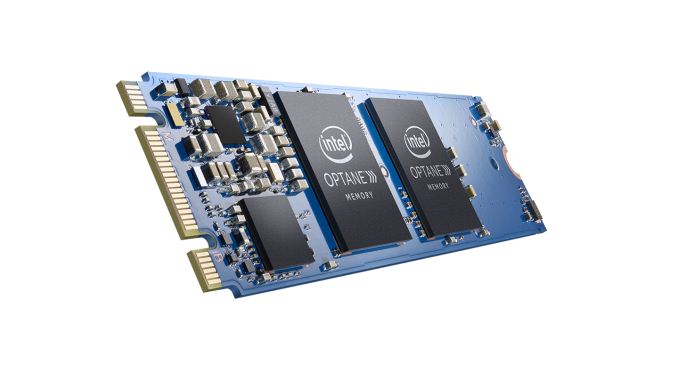- Raid Controller Card For Mac
- Raid Controller Software
- Raid Controller Driver
- Windows 10 Software Raid Controller
If you purchased a pre-configured RAID drive, you may not have any options here. LaCie offers a RAID Monitor app for Mac, but G-RAID does not offer a similar tool. These pre-configured enclosures also don't include any warning lights in the hardware, so it's even more difficult to tell if any of the drives aren't working properly.
Setting up a software RAID (or random array of independent disks) is a great way to inexpensively provide a huge boost to read/write speeds, or add an internal back up solution (or do both!).
All you need is a Mac with the ability to install more than one SSD or HDD (such as a Mac Pro 5,1) and some HDDs or SSDs, we recommend using matched drives in most cases, however, simply matching capacity (2TB etc.) and type (HDD or SSD) is usually fine.
A RAID is basically a collection of physical drives, linked together, that are seen by your system as a single drive. You can set up a RAID in a number of different ways. A striped RAID will boost read and write speeds by splitting your data between all 4 drives and reading/writing to them all at the same time. A mirrored RAID will write the same data to a number of drives, meaning you have real time back-ups that are fully bootable and can repair themselves. You can even set up 2 striped RAIDs in a mirrored RAID. This may sound confusing, but we’ll explain which configuration is best for what soon enough.
Raid Controller Card For Mac
10Gtek Internal PCI Express SAS/SATA HBA RAID Controller Card, SAS2008 Chip, 8-Port 6Gb/s By 10gtek 9.8 View Product 9.8 2: LSI Logic MegaRAID 9260-8i 8-Port SAS RAID Controller. Details about Apple Mac Pro A1247 RAID Controller Card 820-2591-A. Apple Mac Pro A1247 RAID Controller Card 820-2591-A. Item Information. Condition: Used.
Setting up a Striped RAID to Maximise Disk Read & Write Speeds
Setting up a striped RAID is a great option when you need to maximise read & write speeds, regardless of your budget. Theoretically you could set up a striped RAID using 4 PCI-E flash storage blades in an external PCI-E expander, you would hit around 4GB/s read & write speeds with a set up like this, but it wouldn’t be cheap. Alternatively, you could use 4 HDDs in a Mac Pro’s internal HDD bays and hit speeds of around 600MB/s, about 20% faster than the best consumer 2.5″ SSDs, but the cost would be much less. There are also a myriad of options in-between for every budget, you don’t have to use 4 drives, a 2 drive RAID is still extremely effective.
A striped RAID will have disk read & write speeds that are around the sum total of your drives separately. So if you use two 500MB/s SSDs then your RAID will read & write at around 1GB/s.
How to:
- Open Disk Utitlity (Finder > User > Applications > Utilities).
- Format each disk you want to use in your RAID set to ‘Mac OS X Extended (Journaled)’. Do this by selecting each disk in the left hand menu and heading over to the ‘Erase’ tab.
- Select one of the disks you want to use in your RAID.
- Select ‘RAID’ tab in the main portion of the window.
- Name your RAID in the ‘RAID Set Name’ text box.
- Select ‘Mac OS X Extended (Journaled)’ as your format in the ‘Format’ drop down (unless you specifically want another format and know what you are doing).
- Select ‘Striped RAID Set’ in the ‘RAID Type’ drop down.
- Drag the drives you want to use in the RAID from the drive overview section on the left of the window into the RAID Set.
- Hit ‘Create”.
- Once created, your RAID set will appear as below and can now be used to store files.
With a bootable USB installer, you can even install OS X on your new RAID set. You can also use Disk Utility when booting from the USB installer to create a RAID set without having to have another OS X drive for Disk Utility, extremely useful when creating a 4 drive RAID in a Mac Pro.
With a striped RAID set it is essential that you keep a back-up. Should one of the drives in your RAID fail, the whole RAID will fail.


Setting up a Mirrored RAID for real-time, auto-repairing Back Ups
Setting up a mirrored RAID set is a great internal back-up solution, providing a real-time back-up that can even automatically repair itself should a drive fail, this is achieved by writing your data to both disks rather than just one. Again we would recommend using matched drives, but you don’t have to.
You can use SSDs, HDDs and even PCI-E flash storage, it all depends on your needs and budget. You can also use as many disks as you like, you shouldn’t need more than 2, but using 3 or 4 will give you even more security should a drive fail.
How to:
- Open Disk Utitlity (Finder > User > Applications > Utilities).
- Format each disk you want to use in your RAID set to ‘Mac OS X Extended (Journaled)’. Do this by selecting each disk in the left hand menu and heading over to the ‘Erase’ tab.
- Select one of the disks you want to use in your RAID.
- Select ‘RAID’ tab in the main portion of the window.
- Name your RAID in the ‘RAID Set Name’ text box.
- Select ‘Mac OS X Extended (Journaled)’ as your format in the ‘Format’ drop down (unless you specifically want another format and know what you are doing).
- Select ‘Mirrored RAID Set’ in the ‘RAID Type’ drop down.
- Drag the drives you want to use in the RAID from the drive overview section on the left of the window into the RAID Set.
- Hit ‘Options’ and tick ‘Automatically rebuild RAID mirror sets’.
- Hit ‘Create”.
- Once created, your RAID set will appear as below and can now be used to store files.
You’re now all set to install OS X on your mirrored RAID set, or to just use it as a data drive. Again use a bootable USB installer if you have no other drives to install from.
RAID 10: Striped Mirrors and Mirrored Stripes, the best of both worlds
Want the speed of a striped RAID set as well as the security of a mirrored RAID? If so, RAID 10 might be the one for you. A RAID 10 set comprises of two mirrored RAID sets in a striped RAID formation. Should a drive fail, it will auto repair, and you will still get the speed boost of striping (4 drives in a RAID 10 formation will read/write at double the speed of a single drive as opposed to 4 times the speed with a pure striped RAID).
For example, using 4 HDDs in a RAID 10 set will achieve read & write speeds of around 300MB/s as well as having real time back-up and auto repair functionality.
Technically this isn’t actually a RAID 10 set, as a RAID 10 set is a hardware RAID. But it is a software clone and does exactly the same thing. You can call it a mirrored-striped-software-RAID-set if you like.
How to:
- Open Disk Utitlity (Finder > User > Applications > Utilities).
- Format each disk you want to use in your RAID set to ‘Mac OS X Extended (Journaled). Do this by selecting each disk in the left hand menu and heading over to the ‘Erase’ tab.
- Select one of the disks you want to use in your RAID.
- Select ‘RAID’ tab in the main portion of the window.
- Name your RAID in the ‘RAID Set Name’ text box.
- Click the ‘+’ button just below the main section of the window 3 times in order to add 3 partitions.
- Set two of the partitions to ‘Striped RAID Set’ and the final partition to ‘Mirrored RAID Set’.
- Drag two of your drives into the first ‘Striped RAID Set’ and the other two into the second.
- Drag your two ‘Striped RAID Set’s into your ‘Mirrored RAID Set’. (Your RAID configuration should appear the same as the image above).
- Hit ‘Create”.
- Once created, your RAID set will appear as below and can now be used to store files.
Again, you can now install OS X on your mirrored striped RAID set, or simply use it as a data drive.
You can also set up a striped mirrored RAID set (as opposed to mirrored striped), just set up two mirrors and stripe those together instead. Functionality and performance will be the same.
Some Notes on Software RAID Sets

Raid Controller Software
As with any storage drive, you should always keep a physical or online back-up of your RAID set, regardless of the type. In most cases software RAID sets are very reliable, but they can be susceptible to things such as power cuts, again unlikely, but the possibility is always there even with a mirrored RAID.
And remember, it’s not really a back-up unless you have two.
We do also provide hardware RAID controllers for the Mac Pro 5,1 at Create Pro. Complete with on board battery and controller for extra security.
Raid Controller Driver
